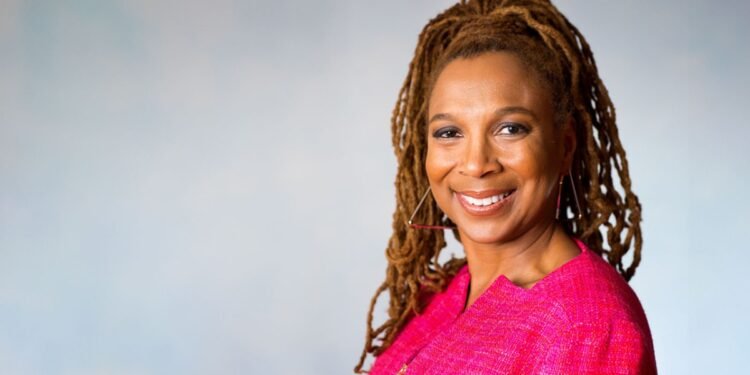What if the way we fight for equality has been missing a crucial piece all along? What happens when race, gender, and class don’t work separately but combine to create unique forms of discrimination?
These questions drove Kimberlé Crenshaw’s groundbreaking work. This pioneering scholar from Canton, Ohio revolutionized social justice thinking. Her concept of intersectionality changed how we understand identity and power.
Kimberlé Crenshaw’s impressive education includes degrees from Cornell and Harvard Law School. She now teaches at both UCLA and Columbia Law School. Her work extends beyond academia into real-world civil rights practice.
This article explores how her theory emerged from legal cases. We’ll examine its global impact on politics and education. Discover why intersectionality remains vital today.
Key Takeaways
- Intersectionality examines how overlapping identities create unique discrimination
- Kimberlé Crenshaw developed this framework through legal analysis
- She holds professorships at two prestigious law schools
- Her work connects academic theory to real-world civil rights practice
- Intersectionality helps us understand complex social inequality
- The theory continues to influence modern policy and education
- Crenshaw’s concepts remain highly relevant in today’s equality discussions
Introduction: Understanding a Transformative Framework
Many equality movements have historically focused on single issues, missing the complex reality of overlapping oppressions. This gap in understanding led to the development of a revolutionary analytical framework.
Intersectionality emerged as a transformative approach that moved beyond legal theory into broader social justice applications. It addresses how multiple identity factors like race and gender interact to create unique experiences.
The framework reveals limitations in single-axis thinking within both feminist and antiracist movements. It shows how focusing on one aspect of identity often excludes those facing compound discrimination.
This analytical tool proves essential for understanding complex lived experiences within marginalized communities. It helps us see how different forms of oppression work together in people’s daily lives.
The concept connects directly to contemporary issues like police brutality and workplace inequality. It reveals policy gaps that affect diverse groups of women and other marginalized people.
This article will trace how intersectionality developed from legal concept to global movement. We’ll explore its history and growing influence across various fields.
It’s crucial to understand that this framework serves as a prism rather than an ideology. It examines how power intersects across different social positions and identities.
The concept focuses on systems and structures rather than individual identities alone. This systemic approach makes it a powerful tool for analyzing institutional racism and other forms of discrimination.
The framework has roots in Black feminist thought that predates its formal naming. This intellectual history informs its current applications in law and politics.
Understanding this analytical approach matters greatly for current social justice initiatives. It provides essential insights for policy reform and equality efforts.
This work represents essential reading for anyone engaged in civil rights or anti-racism work. The theory offers critical tools for creating more inclusive justice movements.
Who is Kimberlé Crenshaw: A Pioneering Scholar and Advocate
How does a small-town Ohio upbringing shape a revolutionary legal thinker? Born in Canton in 1959, this scholar developed early critical thinking skills through family encouragement.
Her parents fostered careful observation of social systems. This foundation would later inform her groundbreaking work in legal theory.
Early Life and Academic Foundations
Kimberlé Crenshaw pursued higher education with exceptional focus. At Cornell University, she studied government and Africana studies.
This dual focus provided deep understanding of race and power structures. She earned her bachelor’s degree in 1981.
Harvard Law School came next, graduating in 1984. She then completed an LLM at the University of Wisconsin.
Her education continued through prestigious fellowships. She served as law clerk to Wisconsin Supreme Court Judge Shirley Abrahamson.
The William H. Hastie Fellowship further developed her legal skills. These experiences built her expertise in civil rights law.
Dual Professorships: UCLA and Columbia Law School
In 1986, Kimberlé Crenshaw joined UCLA law school faculty. She taught critical race theory and intersectionality concepts.
Students recognized her excellence twice. They voted her Professor of the Year in 1991 and 1994.
Columbia law school appointed her full professor in 1995. Kimberlé Crenshaw brought her unique perspective to both institutions.
Her teaching specialties included Advanced Critical Race Theory. She also taught Intersectional Perspectives on race and gender.
In 2011, Kimberlé Crenshaw founded Columbia’s Center for Intersectionality and Social Policy Studies. This center bridges academic theory and real-world practice.
Her international work includes Fulbright Chair in Brazil. She also completed a fellowship at Stanford’s Center of Advanced Behavioral Studies.
These academic roles connect directly to her advocacy. She co-founded the African American Policy Forum to advance social justice.
Her scholarly foundation informs both legal analysis and practical action. This dual approach makes her work uniquely powerful.
Defining Intersectionality: More Than Just a Buzzword
What happens when multiple forms of bias collide to create experiences that existing frameworks cannot adequately address? This question lies at the heart of intersectionality, a powerful analytical tool that goes far beyond trendy terminology.
Intersectionality examines how overlapping social identities create unique experiences of discrimination. It’s not about adding oppressions together. Instead, it reveals how systems of power interact to produce compound effects.
The Core Principle: Overlapping Systems of Power
At its core, intersectionality recognizes that systems like racism, sexism, and classism don’t operate independently. They interact dynamically, creating distinct experiences for people with multiple marginalized identities.
Black women, for example, often face discrimination that differs from what Black men or white women experience. Their reality exists at the crossroads of race and gender bias. This creates unique challenges in employment, healthcare, and justice systems.
The concept predates its formal naming in 1989. Early thinkers like Sojourner Truth articulated these ideas in her 1851 “Ain’t I a Woman?” speech. Anna Julia Cooper continued this work in her 1892 writings about Black women’s experiences.
This framework focuses on structural power rather than individual identity. It examines how institutions and systems create compounded barriers. The approach helps us understand why some groups face particular forms of exclusion.
Intersectionality vs. Identity Politics
Many people confuse intersectionality with identity politics, but they serve different purposes. Intersectionality is an analytical framework for understanding power dynamics. Identity politics involves strategic mobilization around shared identity.
The former examines how systems interact to create inequality. The latter focuses on political organizing based on group identity. While related, they represent distinct approaches to social justice work.
Some misinterpret intersectionality as creating an “oppression Olympics” or targeting white men. These misunderstandings miss the point entirely. The framework actually helps create more effective equality efforts for all communities.
Intersectionality remains essential for comprehensive social analysis. It moves beyond legal applications to inform better policies and practices. This approach helps us address complex discrimination in all its forms.
The Legal Genesis of Intersectionality
How can a single legal paper transform how we understand discrimination? The answer lies in a groundbreaking 1989 publication that changed civil rights law forever.
This pivotal work emerged from years of observing how existing frameworks failed marginalized groups. It addressed a critical gap in anti-discrimination doctrine.

The 1989 Seminal Paper: “Demarginalizing the Intersection…”
During her Cornell years, the scholar noticed something crucial. Gender aspects of race remained underdeveloped in legal theory.
This realization led to her famous 1989 paper. Published in the University of Chicago Legal Forum, it first coined the term intersectionality.
The paper presented a Black feminist critique of anti-discrimination doctrine. It argued that existing frameworks treated race and gender as separate issues.
This separation created legal problems for women of color. They faced compound discrimination that courts couldn’t properly address.
The work became foundational to critical race theory. It also shaped Black feminist legal thought for decades to come.
This theoretical framework demonstrated how existing laws failed. They couldn’t handle cases where discrimination involved multiple identity factors.
Addressing the Gaps in Anti-Discrimination Law
Anti-discrimination law had a fundamental flaw. It required proving bias based on a single identity category.
Courts demanded evidence of race OR gender discrimination. This single-axis approach ignored overlapping forms of prejudice.
Women of color often fell through these legal cracks. Their experiences didn’t fit neatly into either category alone.
The paper critiqued both feminist theory and antiracist politics. Feminist theory frequently overlooked race issues. Antiracist politics often ignored gender concerns.
This analytical gap left many communities without proper legal recourse. The framework connected theoretical analysis to practical justice efforts.
Cases like DeGraffenreid v. General Motors illustrated this problem. Black women faced discrimination that neither race nor gender claims alone could address.
The paper’s influence extended far beyond legal practice. Sociology, education, and public policy all adopted its insights.
This legal genesis distinguishes intersectionality from purely academic concepts. It emerged from real-world discrimination cases and practical law practice.
The framework continues to inform equality efforts today. It helps create more comprehensive approaches to social justice.
Understanding this history remains essential for current civil rights work. The theory provides tools for addressing complex discrimination in modern society.
Key Case Studies: Intersectionality in the Courtroom
Real court battles show why we need better ways to understand discrimination. Two famous cases prove how old laws failed people facing multiple biases.
These legal fights helped shape the intersectionality framework. They show why single-axis thinking doesn’t work in real life.
DeGraffenreid v. General Motors: The Compound Discrimination Problem
In 1976, a group of African American women sued General Motors. They said the company’s hiring practices hurt them doubly for both race and gender.
The court dismissed their case using flawed logic. It said since GM hired Black men, there was no race discrimination.
It also said since white women worked there, no gender bias existed. This ignored how Black women faced both issues together.
This ruling set a bad legal precedent. Courts refused to see compound discrimination as a real issue. It left many without proper justice.
The Anita Hill-Clarence Thomas Hearings: A National Lesson
In 1991, America watched a shocking Supreme Court confirmation. Anita Hill accused Clarence Thomas of sexual harassment.
The legal scholar joined Hill’s team during these hearings. Kimberlé Crenshaw saw how Hill’s voice got lost between two groups.
White feminists focused only on gender issues. Much of the Black community supported Thomas based on race.
Nobody addressed Hill’s experience as a Black woman. Her specific story got silenced in the national debate.
This case showed the real-world cost of single-axis thinking. It proved why we need an intersectional approach to law and justice.
Both cases remain important in legal history. They continue to teach why intersectionality matters for true equality.
Expanding the Theory: From Legal Doctrine to Social Analysis
What if a legal concept could transform how we understand society itself? This powerful framework quickly moved beyond courtrooms to analyze complex social structures.
Intersectionality evolved from a legal tool into a comprehensive analytical method. It now helps us understand how multiple identity factors interact across different systems.
The framework examines overlapping systems of power and privilege. It reveals how different forms of discrimination work together in people’s lives.
Intersectional Feminism and Its Critical Lens
Intersectional feminism examines how women experience oppression differently. It considers factors like race, economic class, sexuality, and ability.
This approach prevents homogenizing women’s experiences. It recognizes that gender discrimination affects various communities in distinct ways.
The scholar described it as a “lazy Susan” metaphor. This allows rotating different identity aspects through a feminist critical lens.
We can examine racism through gender perspectives. We can also analyze transgender identity through economic class frameworks.
Applying the Framework to Class, Sexuality, and Ability
Economic analysis shows how poverty compounds racial and gender discrimination. Low-income women of color face particular challenges in employment and housing.
LGBTQ+ experiences require analysis beyond simple binaries. Intersectionality helps understand how sexuality interacts with other identity factors.
Disability rights benefit from this framework too. It shows how ableism combines with other forms of oppression in healthcare and education.
The theory reveals unique vulnerabilities at identity crossroads. Disabled women of color, for example, face compounded barriers in multiple systems.
This analytical approach prevents assuming all group members share identical experiences. It honors diversity within communities while addressing common issues.
Real-world applications appear in healthcare access studies. They also inform education policy and criminal justice reform efforts.
The framework remains essential for comprehensive social justice work. It moves beyond academic theory into practical practice across multiple fields.
This expansion represents a crucial part of the framework’s history. It demonstrates the concept’s growing influence beyond its legal origins.
Intersectionality continues to shape modern equality efforts worldwide. It provides tools for creating more inclusive policies and practices.
Founding the African American Policy Forum (AAPF)
How can academic theories become real-world change? In 1996, the pioneering scholar co-created an organization to answer this question. She joined forces with Luke Charles Harris to establish the African American Policy Forum.
This think tank focuses on dismantling structural inequality through research and action. Its mission combines racial justice, gender equality, and human rights advocacy. The AAPF builds crucial bridges between scholarly work and public discourse.
Bridging Scholarly Research and Public Discourse
The AAPF translates complex theories into practical solutions. It connects academic insights with community needs and policy making. This approach makes critical race theory accessible to broader audiences.
Researchers, fellows, and artists collaborate at the forum. Dr. Gina Loring serves as artist-in-residence, blending art with activism. The team produces vital reports like “Black Girls Matter: Pushed Out, Overpoliced and Underprotected”.
Podcasts and webinars spread these ideas widely. “Intersectionality Matters!” brings discussions to listeners globally. “Under The Blacklight” webinar series addresses urgent social issues.
Initiatives for Racial Justice and Gender Equality
The #WhyWeCantWait campaign challenged exclusion in education programs. It highlighted how girls of color were overlooked in My Brother’s Keeper. This initiative demanded inclusive policies for all young people.
The forum addresses violence against women of color through intersectional lenses. It also examines police brutality’s unique impact on different communities. These efforts combine research with direct advocacy and policy recommendations.
International work includes contributions to United Nations conferences. The AAPF helped shape discussions at the World Conference on Racism. Its influence extends to constitutional development in South Africa.
The organization represents the practical application of intersectional theory. It turns academic concepts into tangible justice efforts. This work continues to evolve and address emerging social challenges.
The #SayHerName Campaign: Resisting Police Brutality Against Black Women
When conversations about police violence emerged, they often centered on Black men. This left many women of color invisible in national discussions. Their stories remained untold and their justice unmet.
The African American Policy Forum launched #SayHerName to correct this oversight. This powerful movement brings attention to Black women and girls affected by police brutality. It represents a crucial part of intersectional justice work.

Origins and Mission of the Movement
The campaign began with a simple but radical idea. All Black lives matter, including those often overlooked. The movement documents cases where race and gender intersect with state violence.
For years, police violence data focused primarily on male victims. This created a gap in understanding how women experience law enforcement interactions. The campaign fills this critical information void.
#SayHerName uses multiple approaches to achieve its goals. It combines research, advocacy, and community mobilization. Artistic expressions help share these important stories more broadly.
Highlighting Stories of Overlooked Victims
The campaign memorializes women from various backgrounds and ages. Victims range from seven-year-old Aiyana Stanley-Jones to ninety-three-year-old Pearlie Golden. Each story reveals unique aspects of institutional discrimination.
Breonna Taylor’s killing brought national attention to these issues. Other cases include Alberta Spruill, who died from a heart attack during a mistaken raid. Rekia Boyd was shot by an off-duty officer in Chicago.
These women represent diverse communities and experiences. Their stories show how racism and sexism combine in deadly ways. Proper documentation helps prevent future tragedies.
The movement produced a comprehensive report in 2015. This work later expanded into a full book publication. These resources provide crucial data for policy reform efforts.
#SayHerName demonstrates intersectionality in practice. It shows how theoretical frameworks address real-world social justice issues. The campaign continues influencing law enforcement reforms nationwide.
Scholarly Contributions and Published Works
Beyond groundbreaking theories, this scholar produced essential texts that shaped modern thought. Her publications span decades and disciplines. They provide tools for understanding complex social issues.
Her written work bridges academic theory and practical action. These publications remain vital resources for scholars and activists. They continue influencing justice efforts worldwide.
Co-Editor: “Critical Race Theory: The Key Writings…”
In 1996, Kimberlé Crenshaw co-edited a foundational collection. This volume compiled essential essays that formed the critical race theory movement. It brought together key thinkers in the field.
The book helped establish critical race as a distinct legal framework. It documented the intellectual history of this important theory. The work remains standard reading in law schools today.
Earlier, in 1993, she explored hate speech limitations. “Words that Wound” examined assaultive speech and First Amendment issues. This work addressed pressing free speech discrimination questions.
Author: “On Intersectionality: Essential Writings” and “#SayHerName”
Her 2015 collection gathered seminal intersectionality papers. “On Intersectionality: Essential Writings” compiled her most important works. This volume made her theory accessible to broader audiences.
Recent publications include powerful collaborative works. “#SayHerName: Black Women’s Stories of Police Violence” appeared in 2023. This book documented women‘s experiences with law enforcement brutality.
Kimberlé Crenshaw co-edited “Seeing Race Again: Countering Colorblindness” in 2019. This volume challenged colorblind approaches across disciplines. It offered new perspectives on racial justice.
Future work continues her pioneering efforts. “The Race Track” will examine equal opportunity myths. Co-authored with colleagues, it addresses racial justice deficits.
Journal articles form another crucial part of her legacy. Her 1989 “Demarginalizing the Intersection” paper first named the concept. “Mapping the Margins” (1991) further developed these ideas.
Editorial work includes special issues for academic journals. She guest-edited Signs journal’s intersectionality issue. The DuBois Review also featured her editorial guidance on the theory.
These publications serve as essential reading across multiple fields. They influence law, sociology, gender studies, and education. Her written work continues shaping academic and public discourse.
Global Influence and Shaping Modern Policy
How does a legal framework from America become a tool for global justice? The answer lies in intersectionality’s power to address complex discrimination worldwide. This approach has shaped international policies and constitutional reforms across continents.
The pioneering scholar’s work extended far beyond academic circles. Her framework influenced fundamental documents that protect human rights globally. This demonstrates intersectionality’s practical value in real-world justice systems.
Contributions to the South African Constitution
After apartheid ended, South Africa needed a new foundation for equality. The scholar’s framework helped shape the constitution’s equality clause. This ensured protection against multiple forms of discrimination.
Her insights informed how the document addresses overlapping rights violations. The constitution recognizes that race, gender, and class can combine in unique ways. This approach protects diverse communities more effectively.
The South African example shows intersectionality’s global relevance. It proves the framework works beyond its American origins. This constitutional influence represents a major achievement in human rights protection.
Work with the United Nations World Conference on Racism
In 2001, the scholar contributed significantly to global anti-racism efforts. She wrote the background paper on race and gender discrimination for the UN conference. This document helped delegates understand compound bias.
She successfully advocated for including gender in the final conference declaration. This ensured the document addressed women‘s unique experiences with racism. Her work made the declaration more comprehensive and effective.
These international efforts demonstrate the framework’s practical applications. They show how theoretical concepts can influence global policy. The scholar’s UN work continues to inform international human rights approaches.
Beyond these major accomplishments, she served on important national committees. The National Science Foundation’s violence against women research committee benefited from her expertise. She also joined the National Research Council panel on the same issues.
From 1992 to 1995, she participated in the Aspen Institute’s Domestic Strategy Group. This brought intersectional analysis to national policy discussions. Her regular commentary on NPR’s Tavis Smiley Show spread these ideas to broad audiences.
These diverse roles show intersectionality’s relevance across multiple fields. The framework informs research, policy, and public discourse equally well. This demonstrates its value as both analytical tool and practical guide for social justice work.
Addressing the Backlash: Misinterpretations and Clarifications
Why do powerful ideas often face strong resistance and misunderstanding? The framework of intersectionality has encountered significant criticism from various perspectives. Some critics characterize it as creating unnecessarily complicated problems.
Others dismiss it as identity politics taken to extreme levels. These interpretations often miss the fundamental purpose of this analytical tool.
Common Criticisms and Crenshaw’s Responses
Many critics frame intersectionality as an oppression Olympics. They claim it encourages competition between different marginalized groups.
Another frequent misinterpretation suggests the framework specifically targets white men. Some argue it promotes victimhood rather than solutions.
The scholar has consistently responded to these claims through various channels. Her interviews, writings, and public lectures address these misunderstandings directly.
Kimberlé Crenshaw counters that intersectionality examines structural power, not individual identity. The framework analyzes systems rather than blaming specific people or groups.
Critiques come from both conservative and progressive perspectives. Some feminists argue it dilutes focus on gender issues alone.
Antiracist activists sometimes claim it distracts from racial justice efforts. These criticisms often stem from misunderstanding the theory’s purpose.
Intersectionality as an Analytical Lens, Not an Ideology
The creator emphasizes that intersectionality serves as a lens rather than an ideology. It provides a prism for seeing how various inequalities operate together.
This analytical tool reveals how different forms of discrimination interact systemically. It helps understand complex social issues more completely.
The framework distinguishes between analyzing structural power versus individual identity. It focuses on systems and institutions rather than personal characteristics.
This approach makes intersectionality necessary complexity for social analysis. It provides deeper understanding rather than unnecessary complication.
The theory remains vital for comprehensive equality work across communities. It helps create more effective justice efforts for all groups.
Understanding this distinction clarifies the framework’s true purpose. It serves as an essential tool rather than a political agenda.
Conclusion: The Enduring Legacy and Future of Intersectionality
What makes a theoretical framework remain vital decades after its creation? Kimberlé Crenshaw’s intersectionality continues transforming how we understand complex social issues. Her work bridges academic theory and real-world practice across multiple fields.
Recent honors highlight her lasting impact. She joined the American Academy of Arts and Sciences in 2021. The National Women’s Hall of Fame inducted her in 2024, recognizing her lifetime achievements.
Her critical race theory framework keeps evolving through ongoing projects. The African American Policy Forum continues its vital justice efforts. Future publications like “The Race Track” will further examine structural racism.
Intersectionality’s applications expand into new areas like public health and education. It helps analyze emerging social challenges affecting diverse communities. The framework remains essential for comprehensive equality work.
Crenshaw’s legacy combines theoretical innovation with practical advocacy. Her concepts continue influencing new generations of scholars and activists. Intersectionality provides crucial tools for understanding power and inequality in our complex world.
FAQ
What is intersectionality?
Intersectionality is a framework that examines how overlapping social identities, such as race, gender, and class, connect with systems of power and discrimination. It helps reveal how these factors create unique experiences of privilege and oppression.
How did Kimberlé Crenshaw develop the concept of intersectionality?
Crenshaw introduced intersectionality in a 1989 legal paper. She used it to address gaps in anti-discrimination law that failed to protect Black women facing combined race and gender bias.
Is intersectionality only about race and gender?
No. While often applied to race and gender, the framework also includes class, sexuality, ability, and other identity factors. It examines how multiple forms of inequality interact.
What is the African American Policy Forum (AAPF)?
The AAPF is a social justice think tank co-founded by Crenshaw. It connects academic research with public advocacy, focusing on issues like racial justice and gender equality.
What is the #SayHerName campaign?
#SayHerName is a movement started by the AAPF to raise awareness about police violence against Black women. It highlights stories often overlooked in mainstream discussions of police brutality.
Has intersectionality influenced policies outside the United States?
Yes. Crenshaw’s work has had global impact, including contributions to the South African Constitution and participation in United Nations conferences on racism and discrimination.
How is intersectionality different from identity politics?
Identity politics often focuses on a single aspect of identity. Intersectionality analyzes how multiple identities interact within broader systems of power, offering a more complex view of social dynamics.
Has intersectionality faced criticism?
Yes. Some critics misunderstand it as divisive or overly focused on identity. Crenshaw clarifies that it is an analytical tool—not an ideology—meant to foster more inclusive advocacy and policy.





